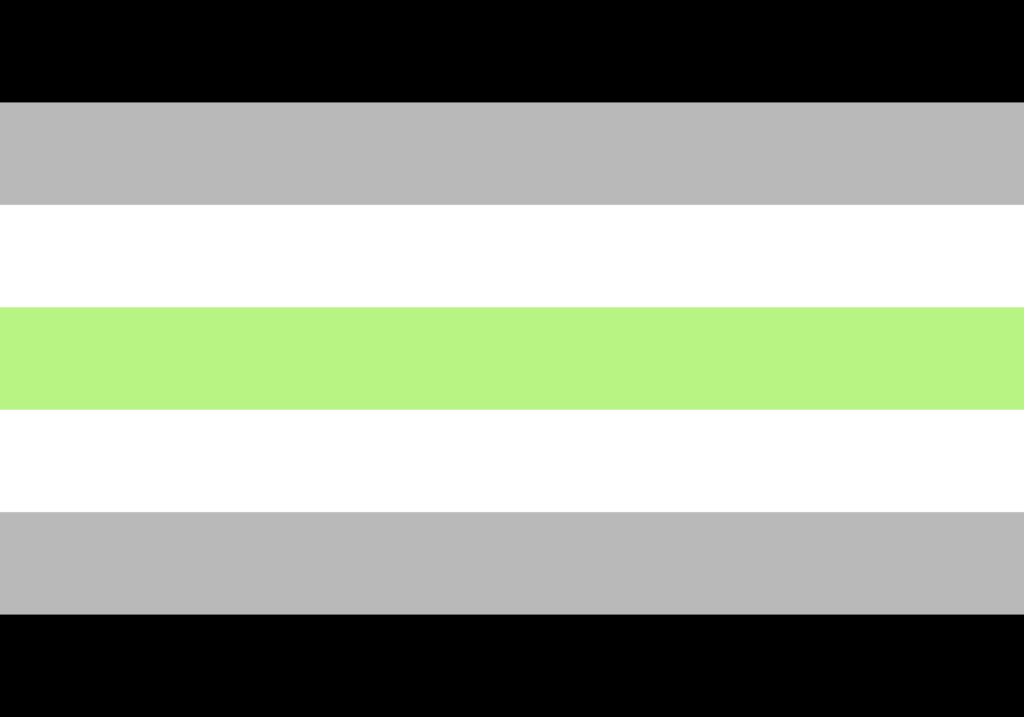Every year on May 19th, two days after the International Day Against Homophobia, Transphobia, and Biphobia, we celebrate Agender Pride Day.

Despite the fact that the term „agender” was coined in 2000, it is still not as well known as other gender-related identities like transgender and non-binary. It’s included in LGBTQIA+ under the letter A, but it’s not always remembered. to celebrate the agender identity we’ll answer some frequently asked questions regarding the agender label.
What is Agender?
Agender is a word that essentially means „without a gender,” but it may also be used as a label. People who use it frequently express feelings of not having a gender, being unable to experience gender, not identifying with any of the 'available’ genders, or existing outside the concept of gender.
Where did the term ‘agender’ come from?
The term „agender” was first used in an online forum in 2000, when a participant defined God as „amorphous and agender.” „Cultures can have transgender, agender, and hypergender individuals,” someone said on another internet forum in 2005.
By 2013, the label had grown in prominence to the point where it was included in a New York Times article titled „Generation LGBTQIA.”
A judge in Oregon gave a 27-year-old the legal right to identify as transgender in 2017. In 2017, the annual Agender Pride Day was established.
Is Agender the same as Non-Binary?
Although agender and non-binary designations have some overlap, they are not the same. For some people, agender may fit under the non-binary umbrella, or they may identify with both identities at the same time, but others may have no affinity for the non-binary term and view agender as a wholly unique concept. There is no single definition or hierarchy for how labels are organized, as there is for all labels, therefore it comes down to personal opinion.
Other names that are sometimes used interchangeably or similarly include neutrois, genderless, null-gender, gendervoid, and neutral-gender.
Are agender people transgender?
It all comes down to personal preference. Some people will believe that their definition of gender belongs under the transgender umbrella, while others may not. Some transgender people will transition socially or medically, while others will not. It’s impossible to make a sweeping statement that cleanly categorizes all agender people as cis or trans.
Similarly, some agender people may or may not identify with other queer categories like gay, lesbian, bisexual, pansexual, or asexual. When you meet someone, the greatest thing you can do is not make any assumptions about them based on the information they provide.
What does being agender look like? What does it mean to be agender?
There is no one-size-fits-all method to be an agender person, especially because the identity is based on not having any one gender! They may pack, bind, or tuck to produce a particular presentation that they find more comfortable, although this is by no means required.
An agender person may use any pronouns, such as he/him, she/her, they/them, or less commonly known sets such as e/em or ze/hir.
It/its pronouns are also commonly used by agender people. Even if they’ve requested you to, referring to someone who uses it/its can feel strange, impolite, or even dehumanizing if you’re unfamiliar with them. However, even if other people’s pronouns don’t immediately’make sense,’ it’s crucial to be courteous and considerate of them.
It/its pronouns can be useful for agender people who don’t want to be associated with the non-binary umbrella associations that other gender neutral pronouns may have. It is critical, however, not to use it/its for persons without their specific permission, as it has a history of being used in transphobic and ableist ways.
How can you tell whether you’re gender? Am I agender?
That is a question that only you can answer! If you’re interested in agender as a label or identity, there are a few things you can do to see if it’s a good fit for you. Trying a new name, haircut, pronouns, or way of dressing can all offer you a taste of other presentations.
You can also try calling yourself agender to friends (online or in person), journaling, or anything else that will help you get used to the sound and see if it feels soothing or true.
Finally, you can seek into other people’s transgender stories to see if any of it resonates with you or is useful. This healthline article, this piece from them. magazine, and neutrois.com’s resource list are all good places to start.
